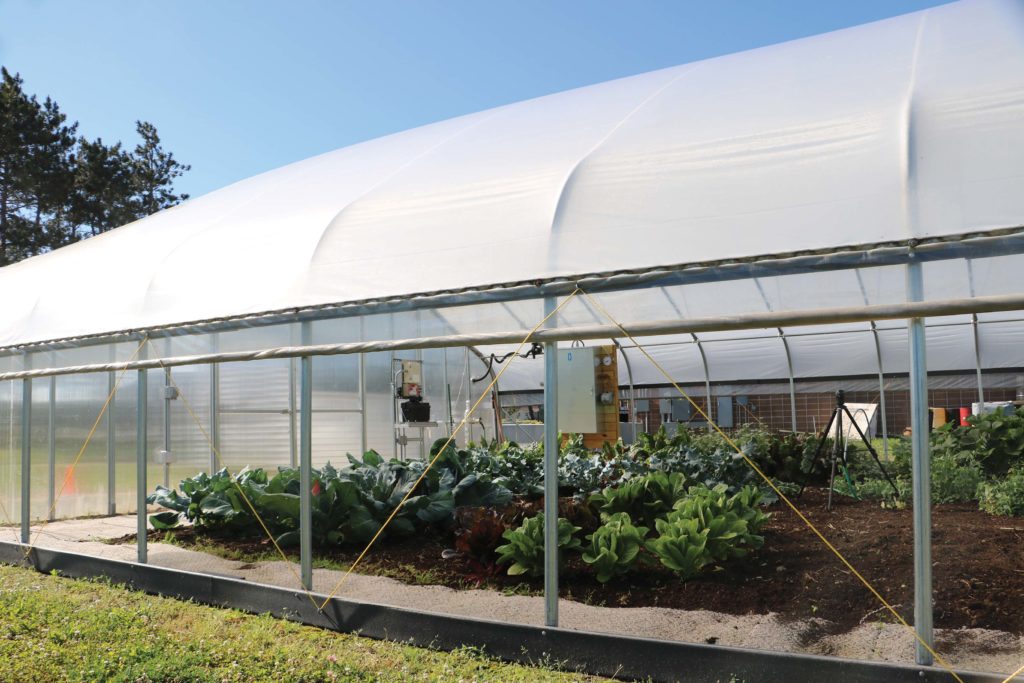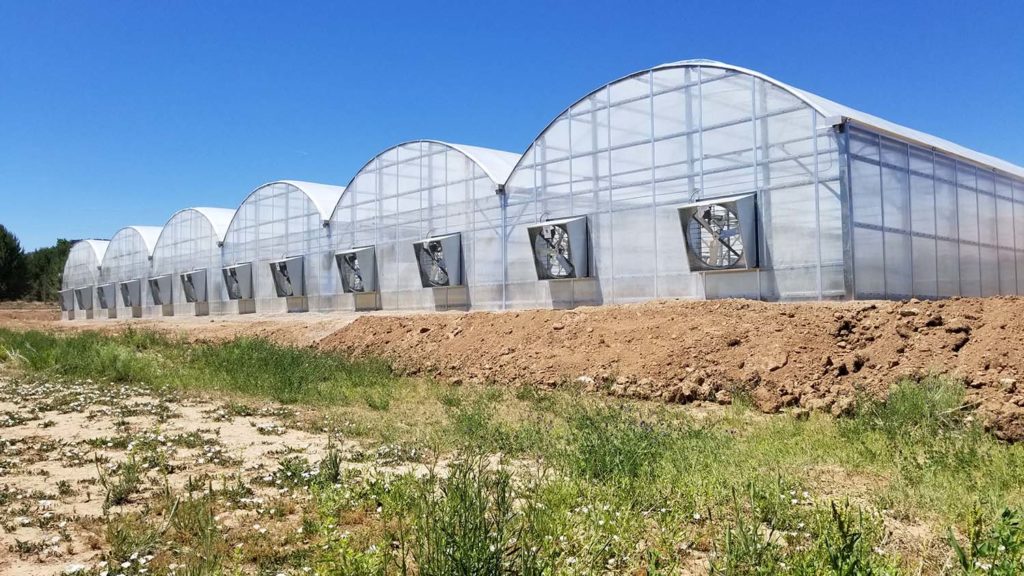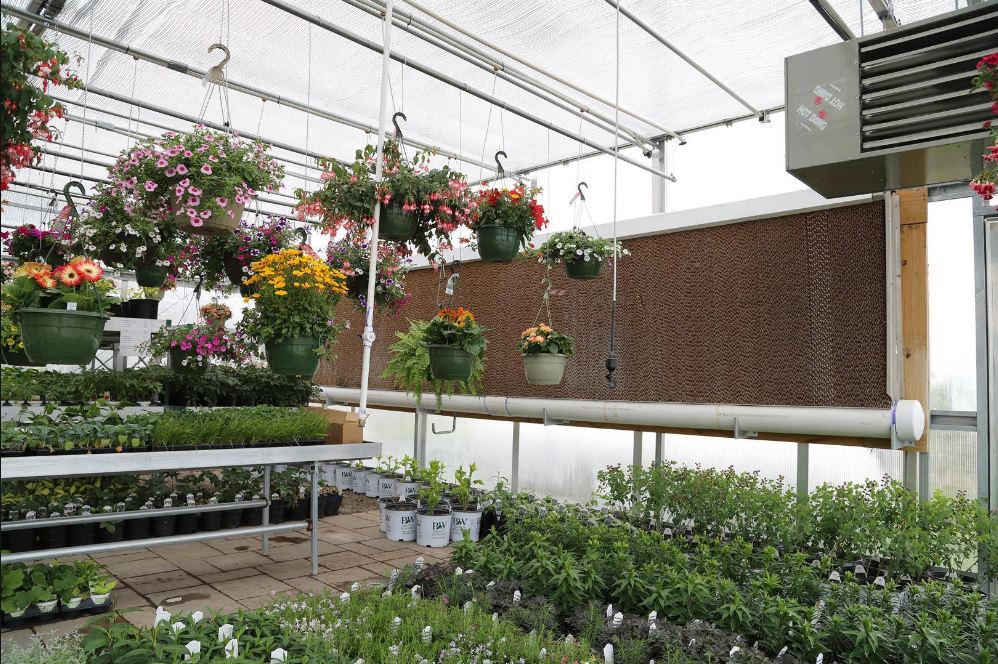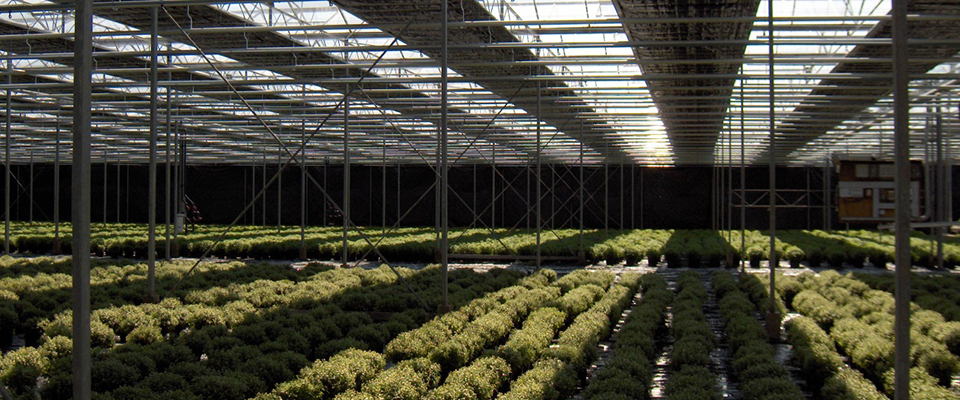The Summer Sun is Overheating Your Greenhouse, Here’s How to Cool it Down
August 21, 2019
As the world moves forward into the summer season, temperatures will continue rising. While the purpose of greenhouses is to keep plants warm, overheating can bring about an array of problems. Increased susceptibility to insects, higher risk of disease, reduced yields and lower crop quality are just a few of the issues extreme temperatures can cause.
In regions where the summertime temperatures are especially high, it is critical to maintain greenhouse temperatures at the desirable level, as few crops prosper in excessively hot temperatures. Over the years, several methods have been developed to keep greenhouses cooler, such as evaporative cooling, but greenhouse design has also evolved to more effectively incorporate passive ventilation. Ideally, growers will use a combination of passive and active ventilation to create the optimal growing environment. A balanced approach that uses both passive and active ventilation can keep both temperatures and costs down.
Reduce Cooling Costs with Passive Ventilation
The primary benefit of passive ventilation is its relatively low cost. The initial investment is lower when compared to active systems, and once your structure is outfitted with the necessary features, the utility and maintenance costs are low as well.
Passive ventilation relies on two factors, the wind effect and thermal buoyancy. The wind effect refers to the principle stating that wind blows around buildings, creating small pressure differences on the outside of the structure. Wind is essential to passive ventilation, and speeds of only two to three miles per hour can provide the majority of the air circulation. Thermal buoyancy is the effect of cold air lifting warm air up towards the top of the structure. It can aid air exchange exceptionally on cooler days, but less so when it is hot.
The standard passive ventilation methods are roof and wall vents. Growers operating in regions with strong summer winds and plenty of open area are able to take the most advantage of vents. The American Society of Agricultural & Biological Engineers recommends that the overall vent area should equal 15 to 20 percent of the floor area. Growers can also customize their greenhouse with doors, louvers, shutters and other ventilation passages for improved air circulation. The ideal passive ventilation system will utilize all of these options, maximizing the potential air flow.

Greenhouses that are constructed with passive ventilation in mind can take advantage of these two principles, lowering operating costs and increasing energy efficiency. Modern greenhouses are designed to provide maximum ventilation, and growers should work with a professional to design a structure that makes optimal usage of passive ventilation options. Still, there are times when passive ventilation simply won’t provide the necessary level of cooling. Fortunately, there are many other cooling options available.
Lower Greenhouse Temperatures with Active Ventilation
Active ventilation is the most effective way to ventilate a greenhouse and help lower temperatures, but it requires increased operating costs and maintenance. Regardless, in situations when greenhouse temperatures are climbing and passive ventilation is unable to regulate them, active ventilation is essential.
Fans are a key method for active ventilation. Fans provide positive air movement regardless of weather conditions, drawing cool air in through ventilation passageways. There is a wide selection of circulation fans, shutters, louvers and exhausts available, allowing growers to create the perfect fan system for their greenhouse. There are a variety of factors that affect fans’ air circulation capabilities, and it is important to consider them before installing any equipment.

First, fans should be the proper size to sufficiently circulate the air within the greenhouse. For summer ventilation, fans should be able to provide one air exchange per minute up to a height of eight feet. You can discover the ventilation rate that is right for your greenhouse by multiplying the dimensions of your greenhouse by the height used above. In hotter climates, a height of up to 10 feet is sometimes used.
Fan location should also be considered. For a system to work to its fullest potential, fan draw distance should be less than 150 feet. Fans should also be located higher in the structure, so that the air flows over the plant canopy. On the opposite end of the greenhouse, louvers should be placed in the wall to allow proper airflow. It’s also important to perform proper maintenance on fan systems regularly. Cleaning fan blades, belts and motors, and removing dirt, weeds or grass from louvers and shutters are both critical to ensuring a long lifespan for the system.
For growers needing even stronger cooling power, there are more powerful options available, like evaporative cooling.
Cool Even the Hottest Structures with Evaporative Cooling
Evaporative cooling is a powerful, efficient way to cool a greenhouse. Using heat in the air to evaporate water from plants, water-soaked pads and other surfaces, these systems can lower temperatures considerably. These systems are also more complex than other cooling methods. They have multiple mechanical parts and require increased utility costs. However, if an operation requires serious cooling capacity, few greenhouse methods compare with evaporative cooling.
The fan and pad system is the preferred method for evaporative cooling. Typically, the system consists of cellulose pads, a water pump, water storage and fans. The cellulose padding is soaked with water administered by the pump. Excess water is then collected into the storage system. Exhaust fans opposite the pads then pull air through the wet surface, evaporating water into the air and cooling the greenhouse. Evaporative cooling works better when relative humidity is low, so this method is especially effective in more arid regions.
It’s important to properly size your fan and pad system to ensure maximum cooling efficiency. About one square foot of pad is required to cool 20 square feet of floor area. Likewise, it’s necessary to properly clean evaporative pad systems. Algae can quickly become an issue with this method, so it’s better to choose an evaporative cooling system that is easy to maintain.
AquaCool Evaporative Cooling Systems are durable, easy to use, and effective. The systems are available in nine sizes to suit any operation, and custom sizing is available. AquaCool Systems use cellulose Kuul Pads, constructed from premium-grade, virgin kraft paper to achieve the most effective and efficient evaporative cooling. Kuul Pads are long lasting, highly absorbent and easily cleaned. With AquaCool Evaporative Cooling Systems, growers can experience a 16 to 20-degree temperature drop.
When growers need another layer of cooling, or improved control over light and photoperiod, they should consider adding a curtain system.

Keep the Temperatures Balanced with Curtain Systems
Curtain systems are often used in conjunction with other cooling systems. Curtain systems can reduce plant stress and improve the environment of your greenhouse. Supplemental shade screens cool the greenhouse by reducing the amount of light that is able to enter the structure. Curtain systems can be used internally or externally, although internal shade screens are more common. Internal curtain systems are generally retractable, allowing growers to decide when to reduce light entering the structure. Growers should look to purchase curtain material constructed from durable polyolefin film and featuring a strong monofilament yarn structure.
When choosing a curtain system, there are multiple designs to consider. Gutter-to-gutter systems use less shade material but form bulkier bundles when retracted. Truss-to-truss systems are the most common and can be configured in several ways. Many greenhouses are now using flat truss-to-truss systems, as it reduces the area of greenhouse that needs to be cooled. Recently, growers have started using a two-screen system. By combining a climate screen with a light deprivation screen, growers can achieve maximum control.
Curtain systems come in several colors, though the most popular are black and white. They are also available in different gradients of shade. This gradient is measured in percentages, such as 30, 60, or 90 percent shade. However, while these percentages do illustrate the amount of light being kept out of the structure, it is important to note that these measurements do not represent temperature reduction. Choosing the right shade gradient for the crop is crucial, so working with a professional can help growers make the right decision.

Find the Perfect Cooling Solution with the Help of GrowSpan
GrowSpan’s respected legacy of providing quality greenhouses and greenhouse systems has persisted for nearly four decades. Growers trust GrowSpan to supply them with the superior structural solutions and top-notch greenhouse equipment, all while providing excellent customer service.
GrowSpan offers the absolute best in greenhouse cooling equipment, making them the premier choice for the horticulture industry. Installing a cooling system can be complex, so GrowSpan always has a Greenhouse Specialist available to help you design the perfect system for your operation.
If you’re ready to start planning the ideal cooling system for your greenhouse, call a GrowSpan Greenhouse Specialist or Request a Quote today.
